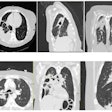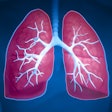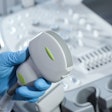The COVID-19 pandemic likely caused a rise in antibiotic use in dentistry, disrupting a previous decline, as rates have since remained high, according to research recently published in the Journal of the American Dental Association.
Dentists in Canada may prescribe antibiotics more frequently than other Western countries, highlighting the need for improved efforts to improve prescribing practices, the authors wrote.
"Dental prescriptions increased to a peak rate during the COVID-19 pandemic and remained elevated into 2023," wrote the authors, led by Dr. Säde Stenlund, PhD, of the University of British Columbia (JADA, January 2025, Vol. 156:1, pp. 37-45).
The study analyzed antibiotics prescribed by dentists in British Columbia from January 1996 to December 2022. Data were sourced from PharmaNet, a centralized database of prescriptions dispensed from community pharmacies, they wrote.
Trends in dental antibiotic prescribing were examined visually and categorized by patient characteristics, health service area, antibiotic type, therapy duration, and dentist experience. Interrupted time series regression was used to assess the COVID-19 pandemic's impact on prescribing practices.
From 1996 to 2022, dentists in British Columbia issued 7.6 million antibiotic prescriptions to 2.9 million patients, with annual prescriptions ranging from 202,195 to 369,015. The number of prescribing dentists grew from 2,380 in 1996 to 3,748 in 2022, they wrote.
Dental prescribing peaked during the COVID-19 pandemic, increasing from 63.8 prescriptions per 1,000 people in 2019 to 70.7 in 2021. And they remained high at 69.4 in 2022. The prescribing of amoxicillin consistently rose, while penicillin use increased among more experienced dentists, and clindamycin prescriptions dropped from 14.5% in 2010 to 7.7% in 2022.
A weeklong course became the most common treatment duration, and prescribing rates across all age groups above age 14 surged during the pandemic, particularly for patients ages 70 to 89. The top quartile of dentists, with a median of 183 prescriptions annually, accounted for nearly 65% of dental antibiotics in 2022, they wrote.
However, the study had limitations. It lacked information on prescribing indications, preventing evaluation of prescription appropriateness or links to dentists' clinical activity, the authors added.
"Renewed efforts to ensure appropriateness of dental antibiotic prescribing are needed," Stenlund and collaborators wrote.




















